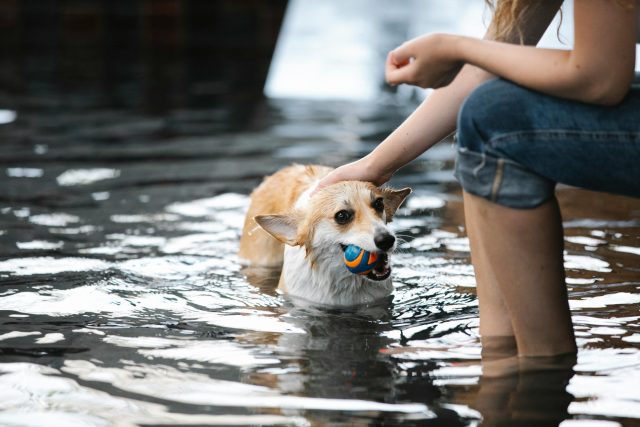A Guide to Safe Pool Swimming for your Pets (Infographic)
There’s no better joy than sharing your pool with your furry friends.
While swimming with your pet can be a fun and rewarding experience, it’s essential to prioritize their safety. In this guide, we’ll explore the ins and outs of safe pool swimming for your pets, so you can create lasting memories together.
Please click the infographic below to open as a PDF for a larger image
Are swimming pools ok for dogs?
Many dogs enjoy swimming and can safely join in the pool activities. However, it’s crucial to consider your pet’s individual needs and abilities. Some breeds, such as bulldogs and pugs, may have difficulty swimming due to their physicality.
Always monitor your dog closely and never force them into the water if they seem hesitant or uncomfortable.
Can dogs go in a chlorine pool?
Yes, dogs can swim in a chlorine pool, but it’s essential to take precautions. Chlorine can cause skin irritation and eye discomfort for some dogs, so it’s important to rinse them off with fresh water after swimming. Additionally, ensure your pool’s chlorine levels are properly balanced to minimize potential issues.
How to swim safely in your pool with your pet
-
Make sure your dog is healthy and ready to swim
Before introducing your dog to the pool, check for any injuries or health concerns that may hinder their ability to swim safely. Consult with your veterinarian if you have any doubts about your pet’s readiness for pool activities.
-
Introduce your pet to the water
Start by familiarizing your dog with the pool area. Allow them to explore the surroundings at their own pace and gradually introduce them to the water. Use positive reinforcement (such as treats!) to encourage them.
-
Consider a floatation device
To enhance your pet’s safety, consider using a dog life jacket, especially if they are new to swimming or have limited abilities. A well-fitted life jacket can provide added buoyancy and support, helping your dog feel more confident in the water.
-
Supervise at all times
Always supervise your pet when they are in or around the pool. Even strong swimmers can become fatigued or disoriented, so it’s crucial to keep a watchful eye on them at all times.

-
Keep your dog hydrated
Ensure your dog has access to fresh, clean water before and after swimming. Pool water can cause dehydration if ingested in large quantities, so encourage your pet to drink from their regular water bowl instead.
-
Take rest breaks
Swimming can be physically demanding for dogs, so it’s important to provide regular rest breaks. Guide your pet to a shallow area or help them exit the pool for short periods to prevent exhaustion.
-
Teach your dog how to exit the pool
Show your dog where the pool steps or ramp are located and practice exiting the pool together. This will help them learn how to safely leave the water on their own if necessary.
-
Have fun!
Remember to enjoy the experience of swimming with your pet. Play games, offer toys, and create an enjoyable atmosphere for both you and your furry friend.

How to prevent any issues for your pet following their swim
-
Clean ears
After swimming, gently clean your dog’s ears to prevent ear infections. Use a pet-safe ear cleaner and cotton balls to remove any excess water or debris.
-
Wash your pet after swimming
Rinse your dog thoroughly with fresh water after swimming to remove any chlorine or chemicals that may irritate their skin. Use a pet-friendly shampoo if needed, and be sure to dry them off with a towel to prevent discomfort.
By following these guidelines, you can ensure a safe and enjoyable swimming experience for your pet in your MPG pool. Remember, every dog is unique, so always prioritize their individual needs and comfort level.
If you need any advice regarding pool safety for pets, contact your local MPG member.
Happy swimming!

